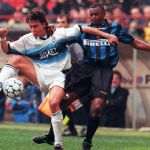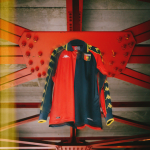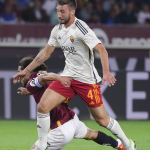
A myth of province: the story of Asics
From Wembley to Empoli's Castellani and Livorno's Picchi
April 2nd, 2021
The more than 72 years of Asics history tell that before becoming a reference point in streetwear and fashion, the brand was above all a sports brand. Born in Japan as a basketball shoe company from Kihachiro Onitsuka, over the years Asics has added materials for all other sports to its production, from running to swimming, from volleyball to rugby. But football, which is the most practiced sport in the world, Asics discovered later, in the late 1980s. Although it may seem belated to enter the balloon for a company founded in 1949, in reality the Japanese brand has been able to make its mark. Especially in Italy, where for more than a decade, the brand has built a very strong bond with some medium-small companies.
For many Italian fans, in fact, Asics is identifiable above all as a brand of the province. A definition that doesn't define a negative or desparging idea. Asics managed to create a perfect identity for teams with a certain budget and organization with limited resources and a low interest rate, whose products had to be comfortable, not necessarily with an impressive aesthetics. Although in reality this has not always been the case, and indeed, Asics' entry into Italian football begins from a very high starting point.
In 1989, Asics appeared at the feet of Franco Baresi, AC Milan's Libero, and Gianluca Vialli, Sampdoria striker, both with testimonials, one of the first models for the ball designed by the Onitsuka company. But despite entering Italy in style, the real boom, however, Asics does so shortly after, during the nineties. The uniforms signed by the Japanese brand invade Europe, in particular Italy, where the brand asserts itself in parallel with the growth of Italian football.
In 1990 he signed an agreement with Sampdoria, the first Italian football club to have relations with Asics: the partnership will continue continuously until 2004. Blucerchiati can be defined as the team that best represented the boom of Asics through its jerseys, capable of bringing the Japanese brand in 1992 to the Champions League Final at Wembley and before even making him champion of Italy. In 1992 he also signed US Lecce, and at Via Del Mare stadium, the brand will produce jerseys until 2013. Still, it was in 1994 that Asics reached the zenith of its merchandising in Italy. In that year, in fact, in addition to Atalanta (at the time between Serie B and Serie A) Asics became sponsor of AS Roma. Francesco Totti was already playing in that time, but AS Roma wasn't having a good seasons and, in the end, the relationship between the giallorossi and the Asian brand will last only three seasons - with some jerseys still of very good design.
After the prestigious experiences in Genoa and Rome, asics remains long contracts with brands of minor sports realities, straddling the Serie A and the cadet division. But it is precisely there that Asics' relationship with Italian football is cemented. Because the logo designed by Herb Lubalin appeared on the chest of Cristiano Lucarelli in Livorno, on that of Chevanton in Lecce, of Cacia in Verona, of Ciccio Tavano in Empoli. He designed, Asics, the jerseys for the kings of the Italian province of the twenty-first century, because between the Nineties and the present days, those divided were seen at Genoa (from 2008 to 2012), Turin (from 2001 to 2008), and then with Cagliari, Empoli, Livorno (at Picchi even from 1993 to 2006), Messina, Brescia, SPAL, Hellas Verona.
Asics has also had excellent productions in European football. In England the highest point reached him with Aston Villa and Norwich, when the Canaries not only sponsored him but also Jersey Partner.
In fact, more than jerseys, Asics has built its icon in football also thanks to the boots. In addition to the mythical Testimonial of Baresi, the Tigers have become unforgettable (to which, through GEL technology, the brand has created one of its most famous sneaker models), tigreor, menace and lethal. Comfortable and cheap, Asics boots have been one of the most national-popular sports products for dressing footballers' feet.







































